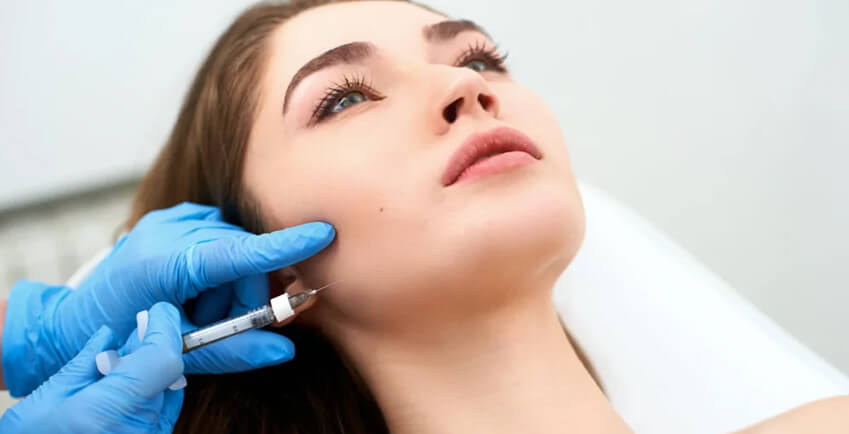Dermal fillers have become one of the most popular cosmetic treatments globally. From restoring youthful volume to enhancing facial features, fillers offer instant, natural-looking results — all without the downtime of surgery. Their rising popularity has been amplified by celebrities who openly discuss their experiences. But has the attention been entirely positive?
Not quite. In fact, the buzz has largely centered on those who overdid it — and the backlash was long overdue.
So, Do Fillers Really Make You Look Fake?
In recent years, several celebrities have gone public with their decision to dissolve their fillers. This shift sparked curiosity, skepticism, and even fear surrounding the safety and aesthetic of fillers. The reality? The issue often isn’t the fillers themselves, but rather excessive use or poor technique that leads to unnatural results.
To truly understand this, let’s dive into the science behind dermal fillers.
What Are Dermal Fillers?
Dermal fillers are injectable substances designed to add volume, smooth out wrinkles, and enhance facial contours. The most commonly used are hyaluronic acid (HA) fillers — a gel-like substance that attracts moisture and adds plumpness to the skin. Because hyaluronic acid is naturally found in the body, these fillers are considered safe, reversible, and highly effective.
They’re most often used to treat:
- Under-eye hollowness
- Cheekbone definition
- Lip enhancement
- Jawline contouring
When placed correctly, HA fillers help restore balance and symmetry to the face — achieving that sought-after “flawless” look while still appearing natural.
Common Myths About Fillers — Debunked
Myth 1: Fillers are permanent.
Most modern fillers are temporary and gradually absorbed by the body over time.
Myth 2: Fillers will make me look fake.
Unnatural results usually come from overfilling or inexperienced injectors — not from the filler itself.
Myth 3: Fillers are toxic.
Hyaluronic acid is biocompatible and naturally produced by the body, making it a safe option.
Myth 4: Once you start, you can’t stop.
Fillers fade gradually. If you choose not to maintain them, your face simply returns to its pre-treatment state.
Is Getting Filler Safe?
When people ask, “Are fillers safe?” — they’re usually referring to hyaluronic acid fillers. Here’s why they’re generally considered safe:
- Biocompatibility: Hyaluronic acid is already present in the body, so allergic reactions are rare.
- Reversibility: If you’re unhappy with the results, fillers can be dissolved quickly using hyaluronidase.
- FDA Approval: Brands like Juvederm and Restylane are FDA-approved and supported by clinical research.
However, safety also depends on factors like injector expertise, product quality, and post-treatment care.
Potential Risks Include:
- Bruising or swelling
- Asymmetry or uneven results
- Lumps or nodules
- Infection
- Rare but serious complications (e.g., vascular occlusion)
Why Are Celebrities Dissolving Their Fillers?
Contrary to popular belief, dissolving fillers doesn’t mean they’re unsafe — it actually showcases one of their key advantages: reversibility. Celebrities are choosing to remove fillers that no longer align with their aesthetic preferences or were overdone in the past. This trend highlights the importance of:
- Moderation
- Artistry
- Choosing the right injector
Thinking About Fillers? Here’s How to Do It Right
If you’re considering dermal fillers, here’s how to ensure a safe and satisfying experience:
- Choose the Right Provider: opt for a board-certified dermatologist or plastic surgeon with advanced aesthetic training.
- Ask About the Product: Ensure they use only FDA-approved or CE-marked* fillers.
- Start Small: Begin with subtle enhancements. You can always add more later.
- Know the Reversal Option: With HA fillers, hyaluronidase can dissolve unwanted filler in 24–48 hours.
- Follow Aftercare: Avoid strenuous activity, heat, or alcohol for 24 hours after treatment.
Final Takeaway
Dermal fillers don’t make you look fake — poor technique and overuse do. When used thoughtfully and placed by skilled hands, fillers can subtly enhance your features, restore youthfulness, and deliver a refreshed, balanced appearance with minimal downtime.
Like any cosmetic treatment, it’s not about changing your face — it’s about refining it.
*CE-marked fillers are dermal fillers that have received the CE mark (Conformité Européenne) — a certification that indicates the product meets the health, safety, and environmental protection standards required for sale in the European Economic Area (EEA).CE marking is mandatory for dermal fillers sold and used in Europe, but it’s also recognized globally as a symbol of safety and reliability.
Author: Dr. Aakansha Vashistha
M.Ch Plastic and Reconstructive Surgery,
Fellowship in Aesthetic Surgery
Assistant Professor, Sawai Mansingh Medical College
8561840164
IAAPS NUMBER: 2024/RJ/30
Disclaimer : The opinions here are personal views of the authors. IAAPS is not responsible. All members may not have the same scientific view point

